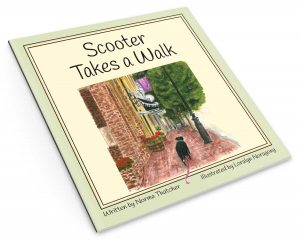
Photo courtesy of George Becker on Pexels
In my role as a speech coach and presentation skills instructor, I’m on a never-ending hunt for new material and ideas. Not willing to rely primarily on old standard public speaking instruction, I search for new studies on how a speaker can best engage with an audience as well as practical advice that people can use to refine their own authentic and inspiring presentation skills. “Find your own voice!” I encourage my students.
But sometimes there is older advice with such a strong backing that I suggest each student add it to their individual public speaking toolbox.
One such compelling (and simple) concept is the power of three. When you’re done reading this blog, go ahead and search online for “the power of three.” You’ll find nearly three million references on Google.
I’m going to share some examples with you and here’s my guess: You’ll start thinking about three and begin to see other instances of its use when before you hadn’t noticed.
Child-related: Goldilocks and the 3 bears / 3 Blind Mice / 3 Little Pigs / Donald Duck’s 3 nephews (Huey, Louie, and Dewey) / The 3 Musketeers / ABC / 123 ready or not here I come
Food: breakfast, lunch and dinner / 3 squares a day / appetizer, main course, dessert / vanilla, chocolate, strawberry / snap, crackle, pop
Music: 3 Times a Lady / Blood, Sweat, and Tears / 3 Dog Night / Earth, Wind and Fire
Sports: The Triple Crown of horse racing / 3 strikes and you’re out / Olympic winners of gold, silver, and bronze
Faith: The Holy Trinity / The three wise men
Phrases: Body, Mind, and Soul / The Big 3 companies today / The Big 3 auto makers / high, medium, and low / beginning, middle, and end / stop, look, and listen / stop, drop, and roll / past, present and future / see no evil, hear no evil, speak no evil / yes, no, maybe / the third time’s the charm
Television: The Third Rock from the Sun / The Three Stooges / Three’s Company / and of course, the double three of Sheldon Cooper (The Big Bang Theory) knocking three times, saying “Penny” and then repeating the process twice more. Maybe I should refer to that as Sheldon to the third power.
So part of the influence of three is that we’re so used to it that we don’t notice it. We’re comfortable with having to make a choice among three options. Three is a nice, middle-of-the-road number. I encourage you to read more on your own on how three is used in successful marketing and other areas.
So how can we use this concept in presentations?
- Have three main points such as, “Coffee is getting a bum rap. Here are three reasons why we should all drink more coffee.”
- In a presentation with more (or less than) three main points, have three supporting ideas for each main point. “Coffee is getting a bum rap. Here are five reasons why we should all drink more coffee. First point: Coffee is actually good for you.” Then you could 1) cite a recent scientific study proving the point 2) share a recent study of people’s morning moods with and without coffee 3) share a personal anecdote about the time you gave up coffee for Lent.
- Include within your presentation a bulleted list of three ideas.
- Begin your presentation with a hook of three words such as Time, Energy, Money – we seem to never have enough of these!
- End your presentation with the same three words Time, Energy, Money…now you have a game plan of how to include more of each in your life.
- End your presentation with a quotation comprised of three elements. An example of that is how I’ll close this post:
Mary Oliver’s instructions for living a life:
Pay attention. Be astonished. Tell about it.




Wow! Just perfect for my day.
Happy ? Day!
Barb, how nice to hear from you! When I write, I never quite know what will “reach” people. So I do appreciate when someone sends me a quick note to let me know we connected. Thanks.
Watch you don’t give away any of your secrets. How about the traditional love, honor, and obey? Or – love, honor, and cherish?
By the way, if I gave up coffee for lent, I would be very difficult to live with!
You know, I wondered, when I used that coffee example, just how many people I would scare. Thanks for adding another 3-some example. My students usually add a new one or two when they hear this message.
I have two brothers… So love being 3 siblings! 🙂
Since I was the last of six children, my brothers (babies 1,2, and 3 for my parents) were young men by the time I was of the age to remember. I guess that’s why I ended up being extra close to my two sisters. I’m glad for your warm relationship with your brothers.